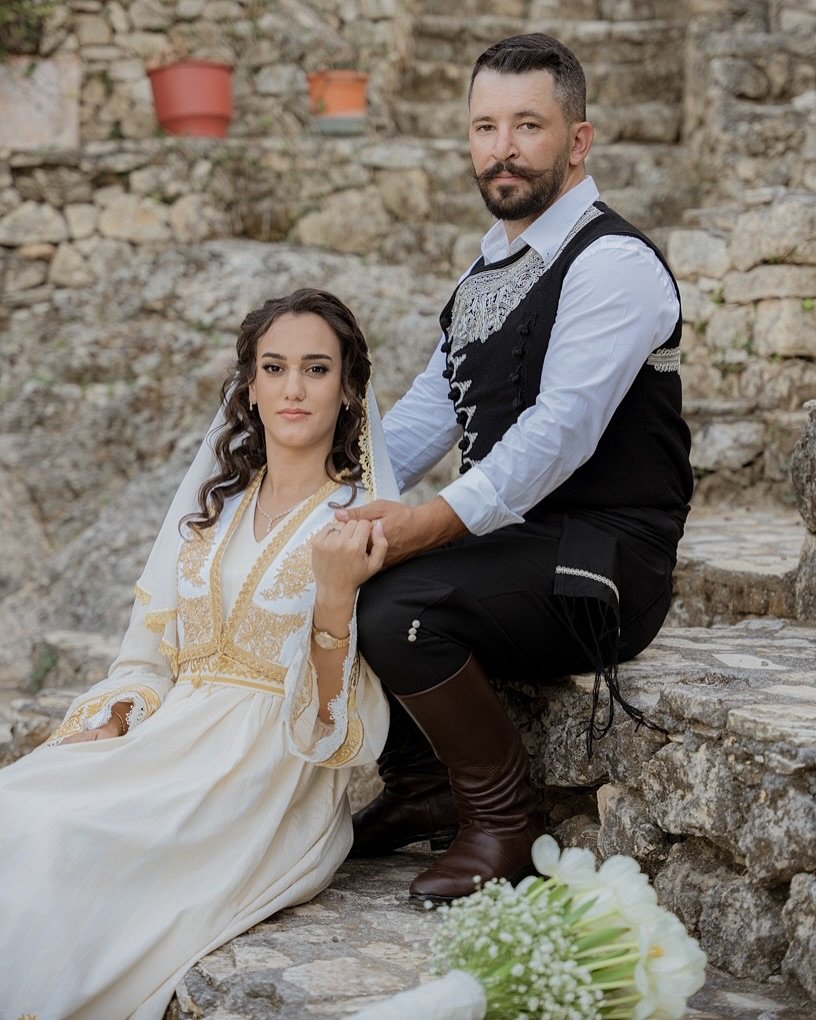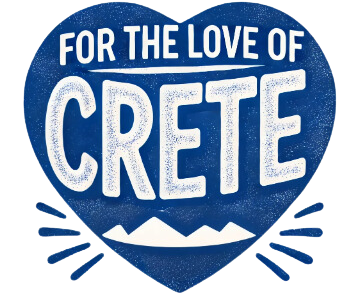Crete stands as a cultural treasure at the crossroads of the Mediterranean, where Europe’s oldest living dialect thrives alongside traditions that have endured for millennia. This largest Greek island isn’t merely a vacation destination but a living museum where ancient customs seamlessly blend with contemporary life. So, what makes the Cretan dialect so exceptional and how does it differ from standard modern Greek? This ancient linguistic treasure traces its roots further back than Ancient Greek itself and was formally recognized by the EU in 2005 after decades of scholarly petitioning. The distinctive sounds and vocabulary have survived centuries of foreign rule, maintaining a remarkable continuity that allows modern Cretans to connect directly with their ancestral heritage in ways unparalleled throughout Europe. Let’s explore these fascinating facts about the Cretan dialect.
1. Europe’s Oldest Living Dialect & Its Unique Features
The Cretan dialect is probably Europe’s oldest living linguistic tradition, with roots stretching back further than Ancient Greek itself. In 2005, after 25 years of dedicated petitioning by Cretan linguists, the EU formally recognized it not merely as a regional variation but as a distinct linguistic treasure. This recognition acknowledges the extraordinary linguistic continuity that exists on the island, where some scholars suggest that a modern Cretan villager might potentially understand elements of speech from the time of Knossos.
The earliest traces of written language in Crete date back to around the 17th century BC with the famous Phaistos disc, stamped with Cretan hieroglyphs used in the Early Palace Period (2000-1700 BC). While this Minoan script remains undeciphered and likely represents a different language altogether, it marks the beginning of Crete’s rich linguistic history. The island’s written traditions later evolved through Linear A during the Late Palace Period (1700-1450 BC) and eventually Linear B, which was deciphered in 1953 and proved to be an early form of Greek. The modern Cretan dialect represents a direct descendant of these ancient Greek forms, though with significant evolution over time.
The Cretan dialect differs from Standard Modern Greek in several ways:
- Pronouncing “kai” (and) more like “che”
- Different positioning of pronouns (e.g., “μιλώ σου” [milo sou] instead of “σου μιλάω” [sou milao])
Here are a few examples of Cretan vocabulary and how they differ from Standard Modern Greek:
| Cretan Greek | Standard Greek | English Meaning |
|---|---|---|
| Oi | Ochi | No |
| Epae | Edo | Here |
| Ekiá | Ekei | There |
| Ínta | Ti | What |
| Giánta | Giati | Why |
| Bre | More | Hey (informal, used for addressing someone) |
| Thoró | Kitázo | I look |
| Xanígo | Vlépo | I see |
| Kateo | Xéro | I know |
| Xásou | Esý apofasízeis | You decide |
| Kouzoulós | Trellós | Crazy |
| Lali | Giagiá | Grandmother |
| Katsouli | Gátaki | Kitten |
| Gatis / Katis | Gata | Cat |
| Theto | Kimáme | I sleep |
| Malotíra | Tsái tou vounou | Mountain tea |
| Manítes | Manitaria | Mushrooms |
| Akúo ti mirodiá | Mirízo | I smell |
| Eínta kámi, bre, epae to kopeli, kouzouláthike | Ti kánei, more, edo to agóri, treláthike | What is the boy doing here? He’s gone crazy! |
| Thés maláka? | Thés malaka tiri? | Do you want soft cheese? (Malaka in Crete refers to a type of cheese, not an insult) |
| Gróthos | Malakas | Fool (used as an insult in Crete instead of malakas) |
| Paráoros | Periérgos | Odd, out of place |
| Kourádi | Kopádi | Flock (of animals) |
| Tsi | Tis | The (genitive case) |
| Koupa | Poto | A full glass of raki or wine that must be drunk in one go |
| Práma | Tipota | Nothing |
| Svolónome | Péfto | I fall |
| Grouvome | Pnígome | I choke |
| Betis | Stérno | Chest |
| Hochliós | Saligári | Snail |
| Kordokólli | Pantelóni | Pants/trousers |
| Paízo me to óplo | Pyrovoló | I shoot (literally “playing with the gun”) |
| Eínde écheis, bre, kai eísai stenachoriméni? | Ti écheis, more, kai eísai stenachoriméni? | What’s wrong, why are you sad? |
| Práma den écho | Típota den écho | I have nothing |
As one Cretan resident notes, “If you visit a traditional village and speak to people, you won’t understand a thing—just enjoy the accent and hospitality.” The grammar isn’t based on Standard Greek; rather, the reverse is true—the dialect is older than the standardized language. While a Standard Greek speaker could communicate with a traditional Cretan speaker with some effort, there are notable differences that can create challenges.
2. The Arab Influence & Linguistic Isolation
The Arab occupation of Crete from 823 to 961 AD marked a pivotal moment in the development of the dialect’s unique features. This extended period of approximately 137 years under Saracen control was critical for the evolution of the distinctive characteristics, according to linguistic scholar Browning (1991). The prolonged isolation from mainland Greece during Arab rule resulted in minimal communication with the rest of the Greek population, allowing the Cretan dialect to develop independently over several generations.
This lengthy period of separation enabled the preservation of older linguistic elements while simultaneously incorporating new influences. The relative isolation helped maintain archaic features that were disappearing elsewhere in the Greek-speaking world, while also allowing for innovations unique to the island. Following the Arab period, Crete experienced renewed Byzantine rule when Nikephoros Phokas recaptured the island in 961 AD, which further shaped the dialect but couldn’t erase the distinctive features that had developed during the long isolation.
The historical separation explains why the Cretan dialect contains vocabulary, pronunciation patterns, and grammatical structures that differ significantly from standard Greek. These distinctive features became deeply embedded during this critical period of separation and have persisted through centuries of subsequent foreign rule, creating a linguistic time capsule that continues to fascinate linguists today.

3. Literary Renaissance & Cultural Expression
The 16th and 17th centuries marked the golden age of Cretan literature, a period of extraordinary cultural flourishing that coincided with Venetian rule. During this renaissance, the dialect found its written expression in literature, folk songs, and rhymes that captured the unique spirit of Cretan culture. The crowning achievement of this period was “Erotokritos,” an epic romantic poem written by Vitsentzos Kornaros (1553-1613) from Eastern Crete. This masterpiece stands as the most celebrated work written in the Cretan dialect.
The Venetian period (1204-1669) created a unique cultural environment where Italian and Greek influences merged, resulting in the flourishing Cretan renaissance. Writers and poets used the Cretan dialect to create works that reflected both their Greek heritage and the cosmopolitan influences of Venice. These literary works preserved the distinctive features of the dialect while elevating it to a sophisticated literary medium.
This literary golden age came to an abrupt end with the Ottoman conquest of Crete in 1669, after which there were no new written forms until the early 19th century when scholars began collecting and preserving dialectal material. Despite this interruption, the works produced during this period provided invaluable documentation of the Cretan dialect and continue to influence Cretan cultural expression today.

4. Geographic Isolation & Modern Distribution
Crete’s mountainous terrain has played a crucial role in preserving its unique dialect. The island’s physical separation from mainland Greece, combined with its internal mountain ranges that divided communities, created natural barriers that helped maintain linguistic distinctiveness. Today, as one native Cretan explains, “The dialect is still spoken, but to hear what it truly sounds like, your best bet is to visit some mountainous villages, and even then, it’s mostly spoken by older people.”
After the Dorian invasion that ended the Post-palatial Period (1400-1100 BC), small groups of the original inhabitants of the island, known as Eteocretans, fled into the mountains where they maintained their Minoan customs and language. This pattern of retreat and preservation in isolated areas has repeated throughout Cretan history, with the mountainous interior serving as a refuge during various occupations.

Contrary to many other Greek dialects that face extinction, the Cretan dialect remains surprisingly resilient, continuing to serve as a means of communication for speakers across various parts of the island. However, its purest forms are increasingly endangered, with some linguists warning that “in a very short time there will be no more genuine (old) Cretan speakers in the world.”
Beyond the island itself, the Cretan dialect has spread through diaspora communities across the Mediterranean. Following the population exchanges of 1923, Muslim Cretans were forced to leave the island and settled primarily in Turkey, particularly in Ayvalık and Cunda Island. Some communities also established themselves in al-Hamidiyah, Syria, and neighboring regions of Lebanon. Today, pristine forms of the dialect are spoken by first-generation Cretan Turks, most of whom are over 80-90 years old. As one Reddit commenter humorously noted, “Only people who understand Cretans and Cypriots (similar dialect) are each other! I have to adjust my lingo a LOT for mainland Greeks to understand me.”
5. Contemporary Usage & Cultural Identity
Today, the Cretan dialect serves as a powerful symbol of Cretan identity despite the standardization of Modern Greek as the official language of Greece in 1829. The dialect remains strongest in informal settings, particularly in villages and among older generations.
However, it also appears prominently in Cretan music, where the lyrics retain a strong connection with the dialect. When communicating with non-Cretans, speakers typically modify their speech, as a Cretan notes: “Unless using idioms, you should understand Cretans most of the time as they adapt to speak more standard Greek when they’re speaking with foreigners or non-Cretans.”
While the purest forms of the dialect may be fading in everyday use, particularly among younger generations educated in Standard Modern Greek, its influence remains embedded in the island’s cultural identity.

Conclusion
The endurance of the Cretan dialect represents far more than a linguistic curiosity—it embodies the resilient spirit of an island that has preserved its cultural identity through millennia of change. From its ancient origins predating classical Greek to its golden age of literature, from the geographic isolation that protected it to the diaspora communities that expanded its reach, the Cretan dialect stands as a testament to the island’s extraordinary cultural continuity. As visitors explore Crete, they’re experiencing a place where language itself serves as a living bridge between past and present, connecting modern Cretans to their ancestors in ways that have become increasingly rare in our rapidly changing world.
Further reading:
5 Fascinating Tales of Cretan Crypto-Christians: Secret Faith Under Ottoman Rule
The Venetian Legacy of Crete: How 400 Years of Rule Shaped the Island

